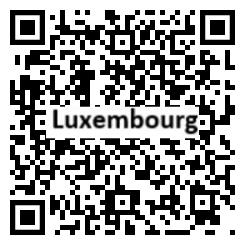Country Summary




Introduction
Background
Founded in 963, Luxembourg became a grand duchy in 1815 and an independent state under the Netherlands. It lost more than half of its territory to Belgium in 1839 but gained a larger measure of autonomy. In 1867, Luxembourg attained full independence under the condition that it promise perpetual neutrality. The country became one of the six founding countries of the EEC (later the EU), and in 1999 it joined the euro currency zone.
Geography
Area
total: 2,586 sq km
land: 2,586 sq km
water: 0 sq km
Climate
modified continental with mild winters, cool summers
Natural resources
iron ore (no longer exploited), arable land
People and Society
Population
650,364 (2022 est.)
Ethnic groups
Luxembourger 52.9%, Portuguese 14.5%, French 7.6%, Italian 3.7%, Belgian 3%, German 2%, Spanish 1.3%, Romania 1%, other 14% (2022 est.)
Languages
Luxembourgish (official administrative and judicial language and national language (spoken vernacular)) 55.8%, Portuguese 15.7%, French (official administrative, judicial, and legislative language) 12.1%, German (official administrative and judicial language) 3.1%, Italian 2.9%, English 2.1%, other 8.4% (2011 est.)
Religions
Christian (predominantly Roman Catholic) 70.6%, Muslim 2.3%, other (includes Buddhist, folk religions, Hindu, Jewish) 0.4%, unaffiliated 26.7% (2020 est.)
Population growth rate
1.64% (2022 est.)
Government
Government type
constitutional monarchy
Capital
name: Luxembourg
Executive branch
chief of state: Grand Duke HENRI (since 7 October 2000); Heir Apparent Prince GUILLAUME (son of the monarch, born 11 November 1981)
head of government: Prime Minister Xavier BETTEL (since 4 December 2013); Deputy Prime Minister Francois BAUSCH (since 11 October 2019); Deputy Prime Minister Daniel KERSCH (since 4 February 2020)
Legislative branch
description: unicameral Chamber of Deputies or Chambre des Deputes (60 seats; members directly elected in multi-seat constituencies by party-list proportional representation vote; members serve 5-year terms); note - a 21-member Council of State appointed by the Grand Duke on the advice of the prime minister serves as an advisory body to the Chamber of Deputies
Economy
Economic overview
high-income, EU-member European economy; global financial and information storage leader; high government spending; one of highest GDP per capita countries; unique audit accountancy based on company sizing; aging labor force; hit by COVID-19
Real GDP (purchasing power parity)
$69.72 billion (2020 est.)
Real GDP per capita
$110,300 (2020 est.)
Agricultural products
milk, wheat, barley, triticale, potatoes, pork, beef, grapes, rapeseed, oats
Industries
banking and financial services, construction, real estate services, iron, metals, and steel, information technology, telecommunications, cargo transportation and logistics, chemicals, engineering, tires, glass, aluminum, tourism, biotechnology
Exports
$137.09 billion (2020 est.)
Exports - partners
Germany 23%, France 13%, Belgium 12%, Netherlands 6%, Italy 5% (2019)
Exports - commodities
iron and iron products, tires, cars, broadcasting equipment, clothing and apparel (2019)
Imports
$110.1 billion (2020 est.)
Imports - partners
Belgium 27%, Germany 24%, France 11%, Netherlands 5% (2019)
Imports - commodities
cars, refined petroleum, broadcasting equipment, scrap iron, aircraft (2019)
Exchange rates
euros (EUR) per US dollar -
Page last updated: Tuesday, May 17, 2022
